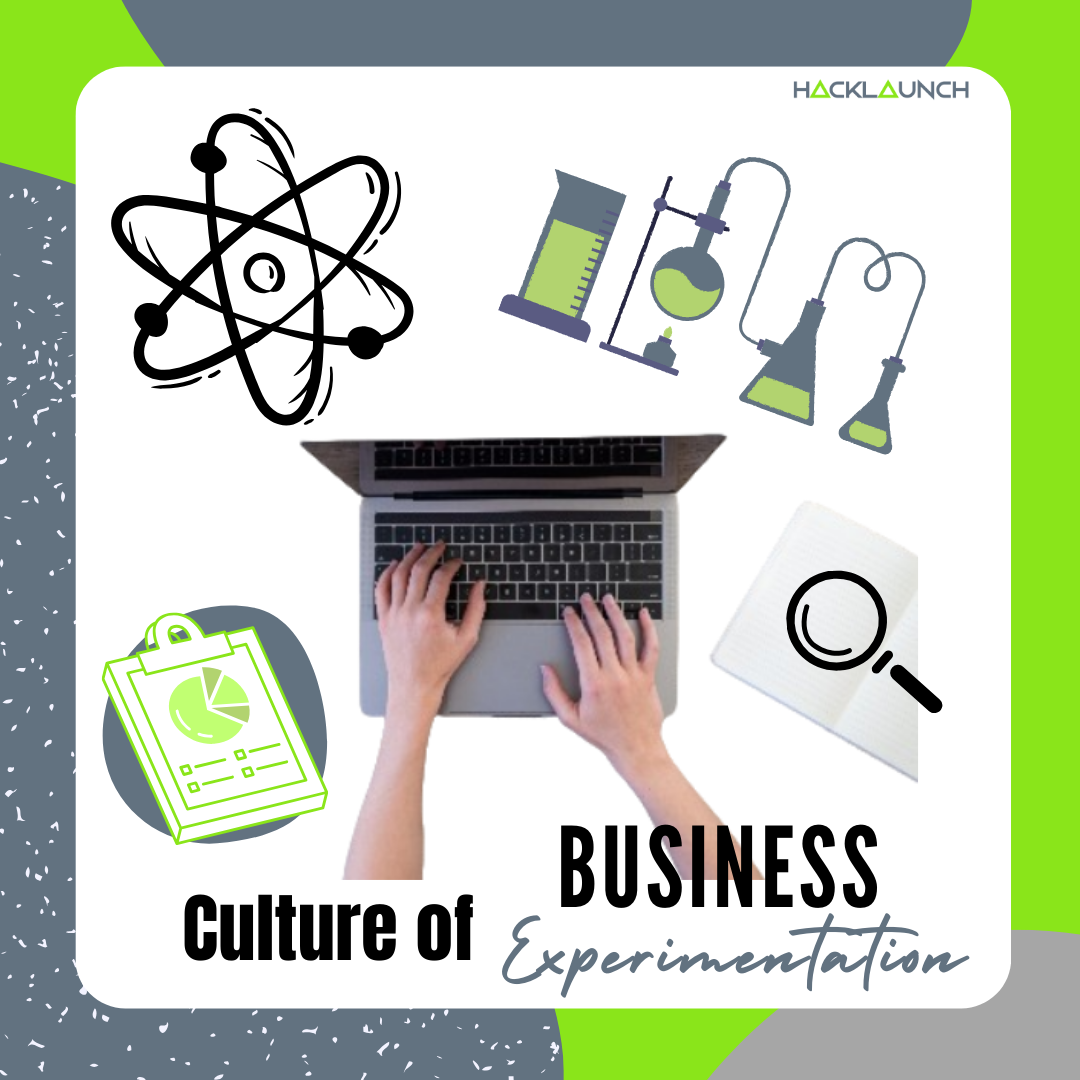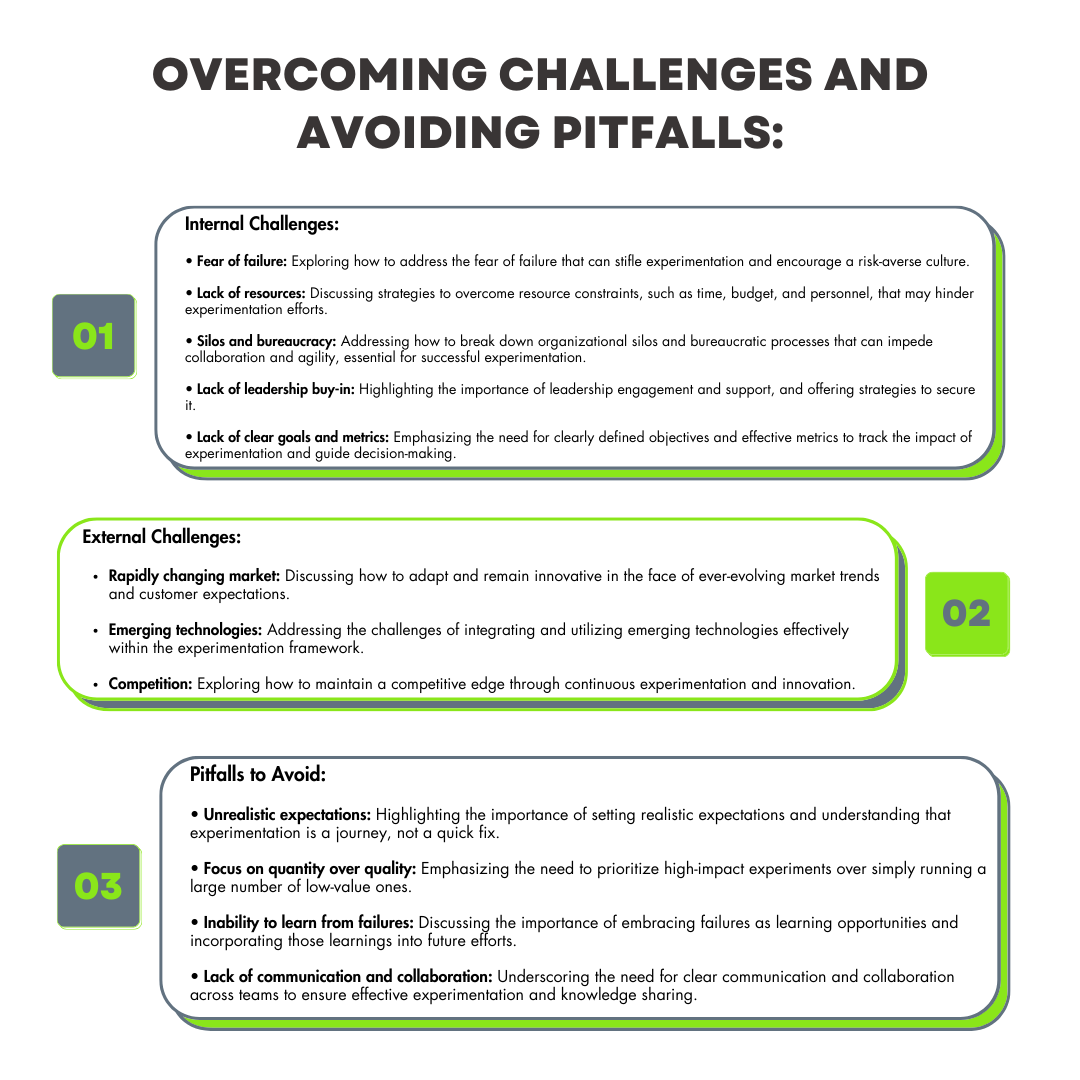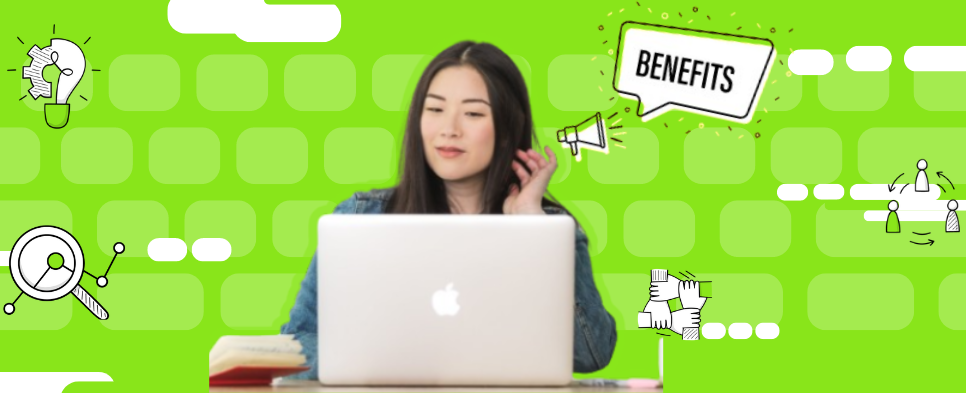
- Blog
How to create a culture of experimentation in your business
By
HackLaunch
Introduction
Feeling stuck in innovation stagnation? Discover how to foster a culture of experimentation in your business, leveraging design thinking, growth hacking, and emerging technologies to unlock explosive growth. Don’t just survive, thrive! Unleash the explosive power of experimentation and transform your business into a hotbed of creative disruption.
Imagine your team brimming with ideas, empowered to test them fearlessly, and fueled by a culture that embraces failure as a stepping stone to success. Imagine data-driven insights guiding your decisions, not gut feelings. Imagine customer-centric innovations that leave your competitors in the dust.
This isn’t just a dream, it’s a reality achievable by fostering a culture of experimentation. It’s about ditching the status quo and embracing a growth mindset. It’s about turning “what if?” into “what now?”, with bold ideas blooming into game-changing products and services.
We’ll explore the key elements of a culture of experimentation, from leadership buy-in to practical steps, and delve into how emerging technologies can fuel your innovation engine.

Key Elements of a Culture of Experimentation
Imagine a vibrant ecosystem where ideas flourish, risks are embraced, and learning reigns supreme. This, my friends, is the essence of a culture of experimentation. But how do we cultivate this fertile ground where innovation blossoms? Let’s delve into the three pillars that underpin this transformative approach:
- Leadership: The Spark That Ignites the Fire
Leadership sets the tone. A culture of experimentation thrives when leaders are champions of innovation, not gatekeepers. They actively encourage exploration, celebrate calculated risks, and prioritize learning over perfection. Consider these two approaches:
- The Fearful Leader: Stifles ideas with bureaucratic hurdles, punishes failures harshly, and prioritizes short-term results over long-term innovation. This fosters a culture of silence and stagnation.
- The Innovation Champion: Empowers teams to experiment, creates safe spaces for failure, and recognizes the value of learning from mistakes. This fosters a culture of trust, creativity, and continuous improvement.
Example: Netflix’s culture of “radical candor” encourages open communication and honest feedback, even when it’s uncomfortable. This has led to countless successful experiments, like personalized recommendations and interactive storytelling.
- Mindset: Embracing the Growth Curve
A culture of experimentation thrives on a growth mindset, where challenges are seen as opportunities to learn and improve. This means embracing failure as a stepping stone, not a dead end. Cultivate this mindset by:
- Reframing failure: Instead of “failure,” talk about “learning experiences” or “prototypes.” Highlight the valuable insights gained from unsuccessful attempts.
- Celebrating small wins: Recognize and reward even incremental progress. This creates a sense of accomplishment and motivates teams to keep experimenting.
- Promoting curiosity: Encourage employees to ask questions, explore new ideas, and challenge the status quo. Foster an environment where diverse perspectives are welcomed and valued.
Example: IDEO, a design and innovation firm, encourages employees to spend 20% of their time working on personal projects and experiments. This fosters a playful and innovative spirit that has led to breakthrough products like the Swiffer and the Nest thermostat. - Process: Building the Innovation Engine
A culture of experimentation needs a structured approach to ensure efficiency and focus. This is where frameworks like design thinking, agile methodology, and A/B testing come into play. Let’s explore each:
- Design Thinking: This human-centered approach helps you understand user needs, ideate solutions, and rapidly prototype and test them. It emphasizes empathy, iteration, and collaboration, leading to more user-centric innovation.
- Agile Methodology: This iterative approach breaks down projects into manageable chunks, allowing for continuous testing and refinement. It fosters flexibility and adaptability, crucial for responding to changing markets and customer needs.
- A/B Testing: This allows you to compare different versions of a product, feature, or marketing campaign to see what resonates best with your audience. It provides data-driven insights to guide your decisions and optimize your offerings.
Example: Amazon’s culture of experimentation is legendary. They encourage employees to run small, quick experiments and use data to measure results. This has led to innovations like one-click ordering and Kindle Direct Publishing.
Practical Steps to Implement a Culture of Experimentation:
Remember, building an innovative ecosystem isn’t a one-time event; it’s a continuous journey of learning, adapting, and evolving.
- Define Your Innovation Goals:
Before diving headfirst into experimentation, it’s crucial to chart your course. What are your key objectives? Are you aiming to improve customer engagement, increase conversion rates, or explore entirely new markets? Defining clear goals helps prioritize resources and ensures your experiments contribute to your overall business strategy.
- Align with Strategy: Ensure your experimentation goals are tightly woven into your broader business strategy. Don’t experiment for the sake of it; make sure each experiment contributes to achieving your overarching objectives.
- Prioritize Impact: Not all ideas are created equal. Prioritize experiments with the highest potential impact, considering factors like potential return on investment (ROI), risk tolerance, and alignment with strategic goals.
Example: Let’s say your goal is to increase customer engagement with your mobile app. You could experiment with different push notification strategies, personalize the home screen based on user preferences, or introduce gamification elements. Each experiment contributes to the overarching goal while allowing you to test and learn what resonates best with your audience. - Empower Your Teams:
Remember, experimentation thrives on active participation, not passive observation. Empower your teams to be the driving force behind innovation by providing them with:
- Autonomy: Give your teams the freedom to explore ideas, design experiments, and analyze results. This fosters ownership and motivation, crucial for sustained experimentation.
- Resources: Allocate budget, time, and tools to support their experiments. This could include access to design thinking workshops, data analysis software, or rapid prototyping tools.
- Collaboration: Encourage cross-functional collaboration between teams. Diverse perspectives lead to more innovative solutions and help break down silos that often hinder experimentation.
Example: Zappos, known for its empowering culture, encourages employees to experiment with new service approaches. They even allocate a specific “experimentation budget” for employees to use without requiring prior approval. This fosters a sense of ownership and empowers employees to drive innovation at the ground level. - Celebrate Successes (and Failures):
Experimentation is a journey, and that journey is paved with both successes and failures. Celebrate both! Recognizing successful experiments motivates teams and reinforces positive behaviors. But don’t shy away from failures either. Treat them as valuable learning opportunities and share the insights gained to inform future efforts.
- Create a Culture of Celebration: Publicly recognize and reward successful experiments, highlighting the positive impact on the business. This reinforces the value of experimentation and motivates teams to keep innovating.
- Learn from Failures: Don’t sweep failures under the rug. Conduct post-mortems to analyze what went wrong and extract valuable learnings. Share these learnings openly with the organization to create a culture of continuous improvement.
Example: Netflix has a culture of “radical candor,” encouraging open and honest feedback, even when it’s uncomfortable. This extends to celebrating both successes and failures, allowing teams to learn from each other and continuously improve their experimentation approach. - Measure and Iterate:
- Track the outcomes of your experiments and use data to inform future decisions.
- Continuously refine your approach based on what you learn.
Remember: Building a culture of experimentation is an ongoing process, not a destination.
Leveraging Emerging Technologies for Experimentation
- Artificial Intelligence (AI) and Machine Learning (ML):
These powerful tools can help you:
- Generate and prioritize ideas: AI algorithms can analyze vast amounts of data to identify hidden patterns and trends, suggesting innovative ideas and prioritizing those with the highest potential for success.
- Personalize experiments: ML can personalize experiments to individual users or segments, allowing you to test and tailor your offerings for maximum impact.
- Optimize results: By analyzing data from your experiments in real-time, ML can suggest adjustments on the fly, optimizing your approach and maximizing results.
Example: Coca-Cola uses AI to personalize vending machine offerings based on weather, location, and even the time of day. This data-driven approach allows them to experiment with different product combinations and optimize their offerings for increased sales. - Big Data and Analytics:
The vast amount of data available today can be a goldmine for experimentation. By harnessing big data and analytics, you can:
- Measure and track results: Track the impact of your experiments with greater precision, gaining deeper insights into what works and what doesn’t.
- Identify hidden correlations: Big data analysis can uncover hidden relationships between variables, leading to unexpected and potentially game-changing discoveries.
- Predict future outcomes: Use historical data and machine learning to predict the potential outcomes of different experiments, helping you make more informed decisions.
Example: Amazon’s A/B testing platform relies heavily on big data and analytics, allowing them to test countless variations of their website and products with pinpoint accuracy. This data-driven approach has been instrumental in their ongoing innovation and customer-centric approach. - Virtual Reality (VR) and Augmented Reality (AR):
These immersive technologies are revolutionizing how we interact with the world, opening doors for innovative experimentation:
- Rapid prototyping: VR and AR allow you to create quick and realistic prototypes of new products or experiences, enabling you to gather user feedback and iterate rapidly.
- Simulating real-world scenarios: Test your ideas in simulated environments before investing in costly real-world deployments, minimizing risk and maximizing learning.
- Enhance data visualization: Use VR and AR to visualize complex data sets in an engaging and informative way, facilitating deeper analysis and decision-making.
Example: Nike uses VR to allow customers to virtually try on shoes before purchasing them. This not only reduces returns but also allows them to gather valuable data on user preferences and inform future product design.
Remember: While these technologies hold immense potential, it’s crucial to use them responsibly and ethically. Consider factors like data privacy, bias in algorithms, and potential unintended consequences before integrating them into your experiments.
Overcoming Challenges and Avoiding Pitfalls
By addressing these challenges and pitfalls, organizations can create a more fertile environment for experimentation to flourish, leading to increased innovation, agility, and ultimately, sustainable business success.

Conclusion
Building a culture of experimentation isn’t a sprint; it’s a marathon. But the rewards are substantial – increased innovation, agility, and a competitive edge in a rapidly changing world. By fostering a growth mindset, empowering your teams, and leveraging emerging technologies, you can transform your business into an innovation powerhouse. Start your journey today, embrace the unknown, celebrate the learnings, and watch your business soar!
Remember, Zappos’ legendary experimentation culture didn’t happen overnight. It took dedication, commitment, and a willingness to learn from every misstep. So, are you ready to delve into the world of experimentation? Embrace the unknown, celebrate the journey, and watch your innovation soar!
“Don’t Get Stuck in Innovation Quicksand: Embrace Experimentation!”
HackLaunch is a global collective team of entrepreneurs, startup founders and industry leaders that traverse strategy, marketing, tech, product and design to help businesses thrive and grow.
Share this post:
Table of Contents
INSIGHTS


